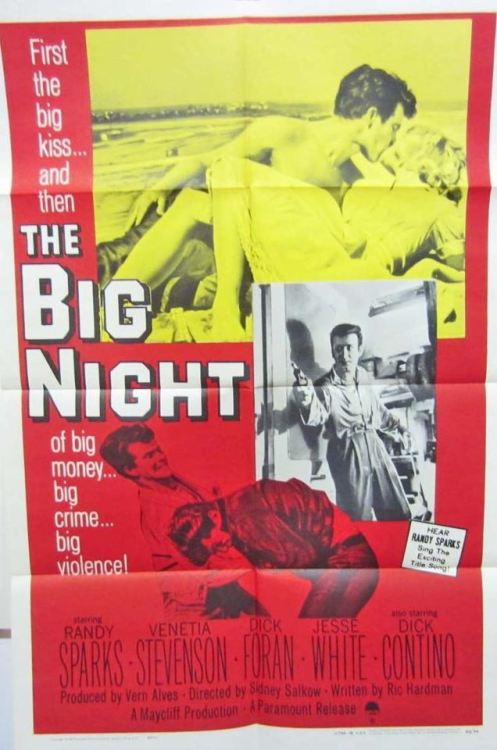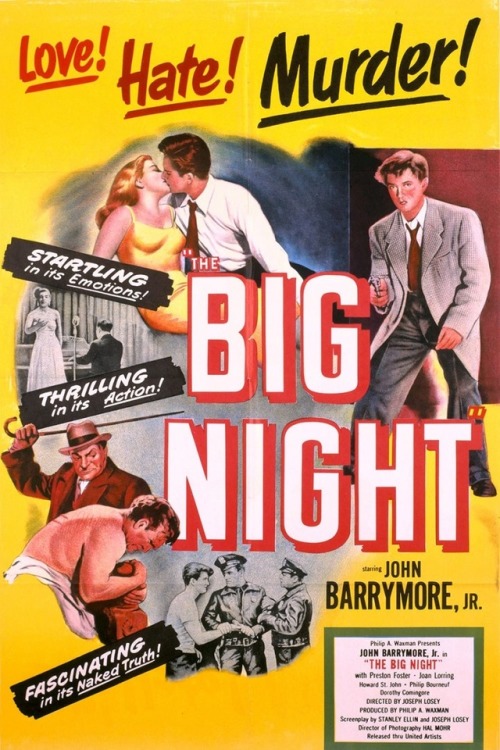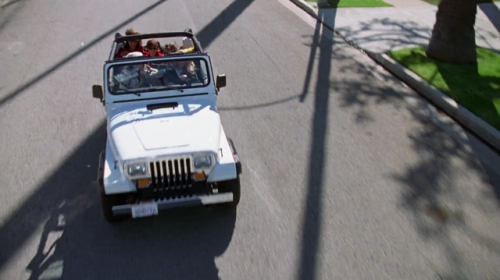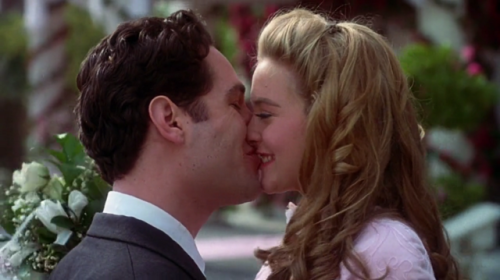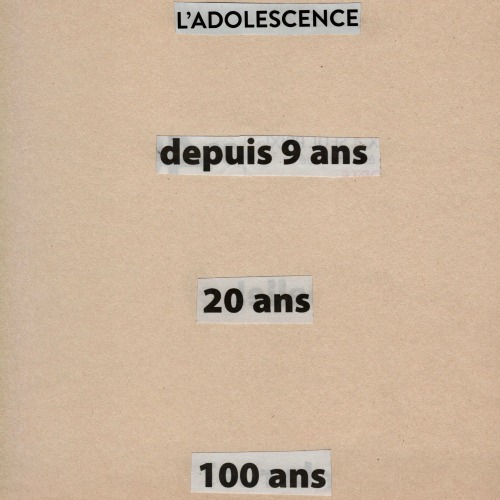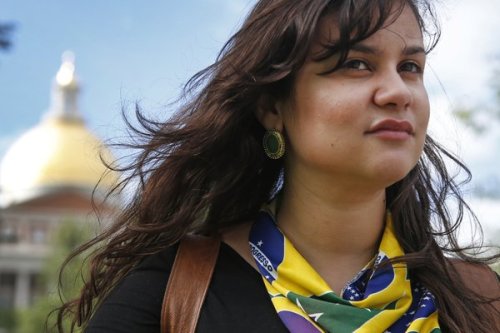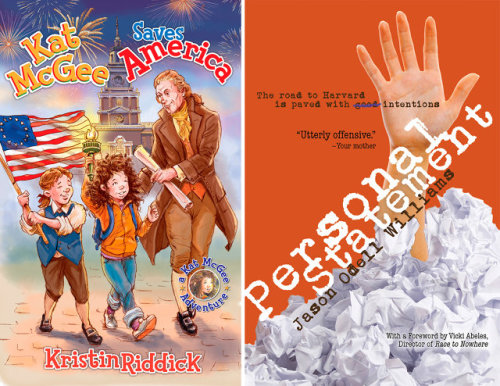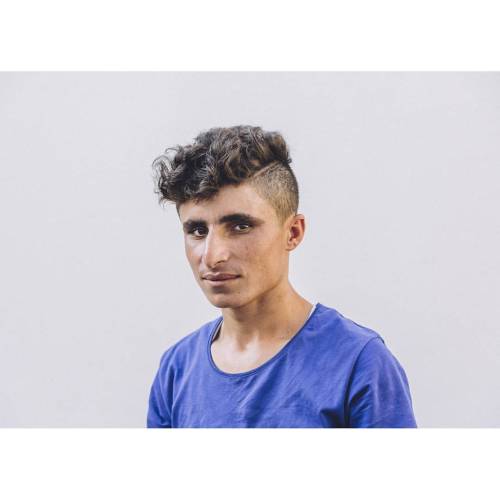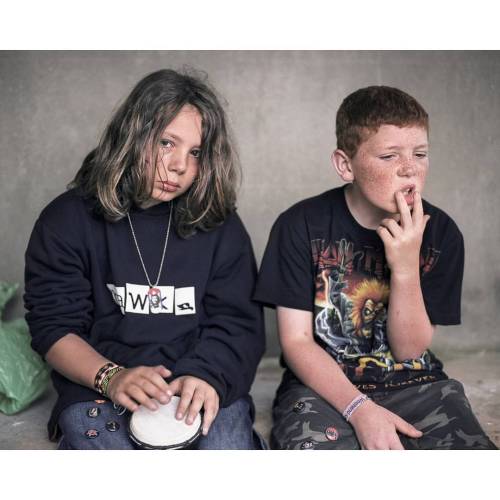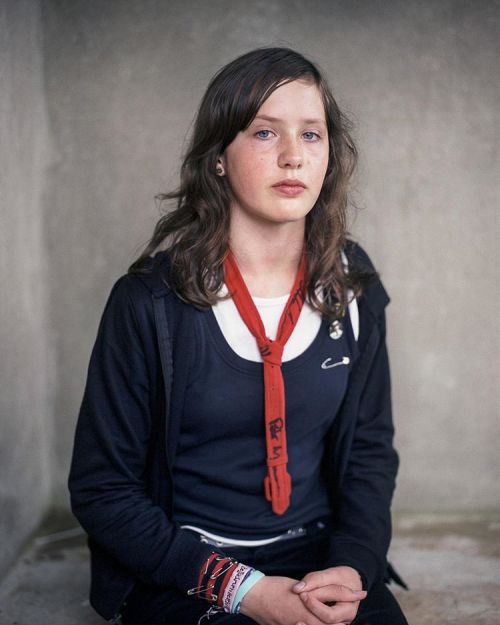#adolescence
THE BIG NIGHT (1951) directed by Joseph Losey
Losey’s last film before leaving the US to exile in America due to HUAC. A taut film noir based on Dreadful Summit by Stanley Ellin which I also recommend.
http://thenighteditor.blogspot.com/2015/11/the-big-night-1951.html
https://bloodymurder.wordpress.com/2013/07/16/the-big-night-1951/
Post link
Another fascinating fact? The hormone testosterone elongates the vocal cords, which leads to a deeper — and sometimes squeaky — voice during puberty.
Post link
Clueless (1995)
Dir: Amy Heckerling
DOP: Bill Pope
“It’s like that book I read in the 9th grade that said “ ‘tis a far far better thing doing stuff for other people.”
Post link
The Young Offenders (2016)
Dir: Peter Foott
DOP: Patrick Jordan
“There are two things you need for an adventure: a treasure map and someone dumb enough to go with you.”
Post link
I guess one of the hardest but most important lessons I had to learn transitioning from adolescence to adulthood once I moved out was to start living by my own standards and not by anyone else’s. I stopped asking everyone for advice on every little thing, ESPECIALLY when it came to making my own healthy relationship. I had to learn that trying to please everyone was killing my happiness and I actually didn’t agree with some advice I was getting.
learning what live I wanted to live, building my core values gave me a platform to base all my decisions off of. I no longer needed to ask for advice on everything once I realised who I was.

The number of American adults identifying as LGBTQ+ is growing. As I reported earlier this year, LGBTQ+ identification in national polls has increased by about 60% from 2012 to 2020, going from 3.5% to 5.6%. However, this increase has been heavily concentrated among the youngest adults (Generation Z), among whom nearly 16% now identify as LGBTQ+.
So what’s happening with adolescents and teenagers? Are we seeing a comparable rise in LGBTQ+ identification in youth populations as well?
A recent report points to a substantial rise in identification among high school students. The data, published in the journal JAMA Pediatrics, come from a survey conducted by the CDC of 41,884 students aged 15-17. Data were collected in 2015, 2017, and 2019.
Participants were asked about both their sexual identity as well as whether they have ever had a same-sex experience.
Between the years 2015-2019, identification as gay, lesbian, or bisexual increased by 41.4% overall, going from 8.3% to 11.7%.
The increase was greater among girls than it was among boys, however. Specifically, LGB identification increased by 46% among high school girls compared to 28% among high school boys.
Girls are also more likely to identify as LGB overall: in the 2019 data (the most recent year available), 17.8% of girls identified as LGB, compared to 5.7% of boys.
Interestingly, despite the change in identification, there were no statistically significant changes overall in terms of whether people had a same-sex experience. In other words, identification changed, but behavior did not.
That said, it’s worth noting that the number of people who reported a same-sex experience was greater than the number who identified as LGB during all waves of data collection—and this was true for both boys and girls.
So, for example, while 11.7% of the overall sample identified as LGB in 2019, 13.3% reported having had a same-sex experience.
In my observation of the data, it appears that the gap between identity and behavior got smaller over time. When you couple this with the fact that behavior did not change, this suggests that the trends we’re seeing may reflect people adopting identities that are more reflective of their attractions and behaviors—perhaps because we live in a time when LGBTQ+ identities are more accepted, which is increasing comfort with coming out.
There are some limitations of this study, including the fact that the only LGBTQ+ identities people could report were gay, lesbian, and bisexual. Thus, the true number who identify as LGBTQ+ is probably higher. Also, “sexual contact” was not defined for participants, so it is unclear which specific behaviors people were referencing when they reported a same-sex experience. Thus, some might be talking about kissing or touching only, whereas other may be talking about oral sex or intercourse, and yet others may be talking about mutual masturbation.
That said, these findings tell us that LGBTQ+ identification is on the rise among US teens, just as it is among US adults—and the numbers may continue to rise as LGBTQ+ acceptance further increases. Of course, we also know that sexuality can be fluid to some extent and that identities, attractions, and behaviors change over time for some people. Thus, it’s also possible that not everyone who identifies as LGBTQ+ now will do so for their entire lives, so we may see some ebbs and flows in the numbers over time.
Want to learn more about Sex and Psychology? Click herefor more from the blog or here to listen to the podcast. Follow Sex and PsychologyonFacebook, Twitter (@JustinLehmiller), or Reddit to receive updates. You can also follow Dr. Lehmiller on YouTubeandInstagram.
To learn more about this research, see: Rapoport, E., Athanasian, C. E., & Adesman, A. (2021). Prevalence of Nonheterosexual Identity and Same-Sex Sexual Contact Among High School Students in the US From 2015 to 2019. JAMA Pediatrics.
Image Credit: Photo by Sharon McCutcheon on Unsplash
You Might Also Like:

Et là, à 13 ans, elle découvre LE drame majeur.
HEARTSTONE (2017)
The story of two teenage boys, when one tries to win the heart of a girl, while the other discovers new feelings towards his best friend.
dir. Guðmundur Arnar Guðmundsson
Language: IcelandicOver one long summer in their small fishing village, Thor and Kristján become inseparable. Hanging out with older teenage sisters and friends, they get into scrapes and have adventures. Facing the travails of an alcoholic father and a single mother who’s newly back on the dating scene, the two stoically cope with a problematic domestic life by taking refuge and pleasure in each other’s company. Sex is never far from anyone’s minds and the rich emotional landscape of early adolescence offers plenty of opportunities and challenges. The boys appear unable to articulate what all their friends already suspect, but then things change suddenly and dramatically, offering up some unexpected results.
Showing at: (LGBT) BFI Flare - 22 March
Trailer:https://youtu.be/EIolgEvMAJ8
SOON IN CINEMAS:
Sweden (June 30)
Japan(July 15)
UK,USA,FRANCE,AUSTRALIA (date TBA)
// Now playing in Portugal, Turkey, Poland, Denmark
Post link
New study says teen immigrants are less likely to sell drugs, binge drink and be violent
In a paper published earlier this month by Social Psychiatry and Psychiatric Epidemiology, researchers drawing on data from the National Survey on Drug Use and Health found that teenage immigrants were significantly less likely to sell illicit drugs, binge-drink alcohol or engage in violent or criminal behavior than their U.S.-born peers. But the more they assimilate into American culture things change.
Post link
Young Motherhood in the Dominican Republic
“Don’t be with too many boys,” 18-year-old Maria Luisa Rodriguez recalls her mother telling her. “After 7 p.m., stay at home.”
But that was the extent of sexual education she received before becoming pregnant at the age of 16. Now, she is five months pregnant with her second child.
“Before I got pregnant, I did not know anything about sex,” said 16-year-old Pamela Pinales, who is seven months pregnant with her first child.
This is considered common advice in the Dominican Republic, where more than one in 10 teenage girls became pregnant in 2013, according to the United Nations Population Fund. That’s double the world average and triple the United States average.
See more work from Jennifer Gonzalez and Luke Nozicka’s project “Teenage Pregnancy in the Dominican Republic,” here.
nostalgiczny spacer
#olsztyn #poland #warmia #warmiaimazury #weekend #weekendvibes #nostalgia #childhood #adolescence (at Olsztyn)
https://www.instagram.com/p/CdlUXYZofXf/?igshid=NGJjMDIxMWI=
Post link
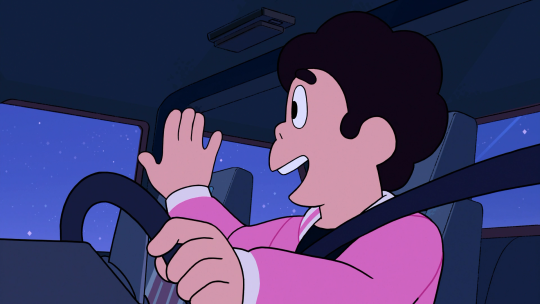
Image source: SU Wiki
Many times in the past, I’d written about Steven’s needing to take up the roles of caregiver, authority figure, and generally being an adult throughout the series. However, I’d also written about how Steven Universe Future highlighted that Steven is in the process of growing up. Both are true. This meta explores how SUF is a dovetailing from the childlike worldview Steven had in the original series, eventually coming to celebrate his adolescence, in all its ups, downs, and uncertainties.
Teenaged Ang-Steven

Image source: SU WIki
Very glaring in the SUF episodes is that upon first impression, Steven is grumpy for many of the episodes. He loses his temper more often than he did in the original series, which surprised many fans when SUF aired.
Biologically-speaking, this isn’t a big surprise. In Earth-years, Steven is at the age when his body is growing and changing. He’s 16 in SUF, the age when a lot of people go through puberty. But it’s not only that. Accompanying his growth spurt and deeper voice, he’s also still learning about and navigating the Gem aspects of his physiology. Physical and hormonal changes are enough to alter mood on their own.
More than that, though, Steven is in the age of adolescence. What adolescence means now varies depending on the source. Generally, though, it’s referred to as a period of rapid growth and development physically, cognitively, and socially. After all, between the ages of 10 and 24, it is generally expected that the youth pick up skills, find direction in life, and find ways to cope with and function in society.
And the age range for that development is wider than just the teenaged years. For someone with Steven’s background and maturity, SUF was his time to find out where he should begin forging a vocation for himself. It might be later, especially for those who have pursued formal higher education, since they’re students until their early 20s. For others, who take on work while studying, or who don’t attend formal schooling, it might be even earlier.
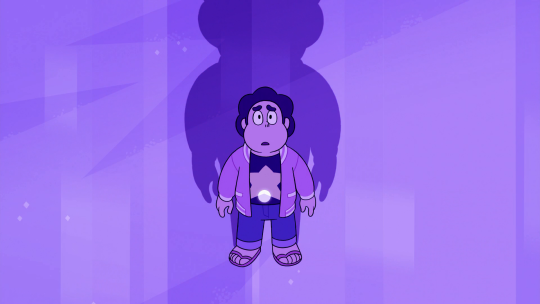
Image source: SU Wiki
Steven is cranky, snappy, grumpy, because there’s a lot of pressure to figure things out. Though we are uncertain of Steven’s actual lifespan, he lives on Earth and was raised on Earth time. He feels the urgency of deciding the way a lot of young people feel pressured to choose a college program, or a particular line of work. The prevailing logic is that one gets started, and works their way up until they’re “successful,” whatever that may mean to them.
In our modern, capitalist society, this may mean earning a stable income. For more traditional communities, this may mean settling down and having a family. For some, it may mean having a fulfilling, productive vocation to pour your life into. For nearly all of us, it’s some mixture of the three. And Steven might be feeling this as well.
Crystal Kid, Grown Up Too Soon
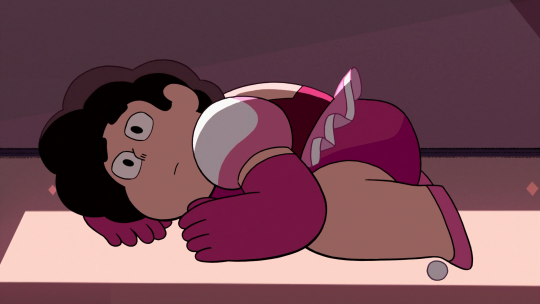
Image source: SU Wiki
This assessment of Steven may seem a contradiction of Steven’s earlier character analyses. After all, Steven has been characterised as mature for his age. In the show’s beginning he was 13, but was already capable of thinking of other people’s needs. When he was 14, he was comforting the Gems, unpacking and helping resolve each of their traumas. When he was 15, he was regularly saving the world in a pacifist way.
Stevenis emotionally mature and considerate for his age. But there are two important things to note about his behaviour in the main seasons.
First, his entire life revolved around the Crystal Gems and being a hero. He moved in with the Crystal Gems as a child. When discussing career aspirations in Frybo, he tells Peedee in one of the first episodes of his show that he wants to be a hero and put smiles on the faces of others.
For the next decade or so, that’s exactly what he did. He trained, he tagged along, and finally, he took the lead. But after the SU Movie and SUF, we see Steven consider something else. His conception of hero was evolving. More than that, the idea of a hero itself was context-specific.
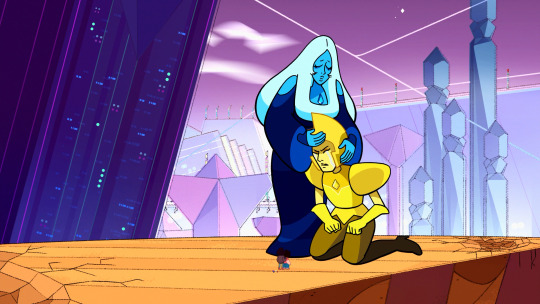
Image source: SU Wiki
Once upon a time, Steven thought being a Crystal Gem meant fighting bad guys like the corrupted Gems. Finding out that they still had a revivable consciousness in Bubble Buddies changed all of that.
Then, the blame shifted to Homeworld for waging war on Earth. But things were complicated when he met and befriended Peridot (especially after Log Date 7 15 2), when he saw that Jasper was just the victim of a broken social structure in Gem Hunt, when he saw that Gems like LapisandPearl still felt conflicted about Homeworld, and saw it as home.
The fault fell to the Great Diamond Authority, for imposing the caste system in the first place and conquering planets. But he found out his own mother was complicit in this, and in the wake of her own realisations left a trail of loose ends and grieving hearts that fell to him to deal with.
And then there was no one else to blame. There were no more threats that required his very specific set of skills, that he had cultivated for years, that he had attached his self-worth to. This is the second factor. All the maturity and “grown-up” qualities he had, he didn’t know how to apply to other places. And the dissonance between what he wants to be able to do as he learned how to channel his energies into post-war efforts, and how well he was able to execute them, caused him the emotional stress and distress that we see manifest in the show.
What I Want to Be

Image source: SU Wiki
All the while, he came to concretise his own philosophy in life. Still to protect the smiles on everyone’s faces. But exactly how to do that was evolving in his mind. SUF was the first time he considered that “how” might not be related to the Gems at all.
In a similar way, the question, “What do you want to be when you grow up?” is more easily answered in childhood than as an adolescent. It’s easy to say “teacher,” “firefighter,” “writer,” or “doctor.” As we grow up, though, we learn that there are so many more paths than we thought, and even more paths that have yet to be discovered. There are dozens of careers that exist now that just didn’t when I was a child. And even among those well-established jobs, there are specialisations, sub-specialisations– just so many specifics that you don’t even realise exist until you’re already walking along that path.
Because only when you dare to walk the path do you realise the amount of effort and technical speciality that goes on behind your favourite shows, a company, even a lifestyle.
The moment you realise, though, the world is thrown open wide and everything has changed. In the short period of SUF, Steven tries his hand at many things, including administrative work, continuing his original idea of hero work, teaching, and hobbyist work. It might have been the sampler he needed to spur his decision to move out and move on.
An Ode to Adolescence

Image source: SU Wiki
The reason many works of fiction write about adolescence, I feel, is that it’s such a nebulous and transitionary period in someone’s life (we can’t even get the exact age range defined). From everything being so clear-cut and the path being paved for you, the bricks and mortar are thrust into your hands, and then the path is all up to you. The series and the show ends with Steven literally in the driver’s seat of his own car.
As grown-up as he needed to act, Steven was still a child in the main series. He was doing what he thought he should do and what he felt was the right thing, within the context of being a Crystal Gem and a hero.
Post-war, even the concept of Crystal Gems had evolved. And he found the Gems were much better at handling Little Homeschool, at rehabilitating Gems, at helping Gems adjust to Earth society, than he was.
Steven wasn’t exactly jealous. In fact, for the first time, Steven’s attentions weren’t turned outward anymore. He finally focused on himself, and when you strip away the war, his mother’s baggage, and the constant threats on his friends and his way of life, he realised he never thought about what he wanted to do.

Image source: SU Wiki
In meta, the fact that SUF is so short compared to the rest of the series is a mirroring of how memories in childhood feel so much longer. One hour felt like an eternity and the days passed slowly. There was always something new to look at, something else to learn.
In contrast, adolescence feels so fast precisely because we’re thrust into making decisions that feel like they’ll be life-changing and so much bigger than anything we’ve had to choose before. Later in life, as adults, we come to realise that no one has it all figured out and that life can take you to unexpected places. But there’s a seeming finality and grandiosity with the decisions you make as an adolescent, hence the overdramatic teen analogy.
SUF is also more fast-paced, with the stakes being raised quickly within the first 10 episodes, and then many attempts at resolution throughout. If there’s one thing Steven was bent on doing, it was to leave without loose ends in a way way Rose did not.

Image source: SU Wiki
When we finally get to the end of SUF, it’s understated. It’s a quiet drive away from everything that was familiar and what you called home. It’s filled with hope and at the same time commitments. I’d like to think that’s what adulthood is about: not looking for those big explosions and dramatic moments because it’s just not practical and it’s exhausting amid all the responsibilities. Rather, it’s a commitment to keep hoping, keep choosing love, and keeping your raison d’être close to you despite the challenges. Bring smiles to people’s faces, in the small decisions day by day.
Carey Albertine and Saira Rao (pictured), the team behind In This Together Media, are changing young adult literature for the better. You won’t find cookie cutter story lines from them - they’re putting out books with stories teens can actually relate to. Read more about them here in Fast Company.
Post link
September 2016, 18-year-old Ömer Gül photographed in Kyrenia, North Cyprus.
On my journey from Larnaca Airport into North Cyprus, my driver, Irkan, explained that since the North Cypriots were given access to the European Union, the culture had changed - young people were more exposed to international influences, and he could see this in their fashion, their choice of music, and their
hairstyles. In Kyrenia, Ömer definitely ticked the haircut box.
#northcyprus #visitnorthcyprus #kyrenia #girne #youth #cypriot #haircut #style #teenager #adolescence #portrait #retrato #travelphotography #travel #adventure #boy #portraiture #assignment (at Kyrenia, Kyrenia, Cyprus)
Post link
From the archive - August 2007, Inverness, Scotland. Boy in bunny hat, at the Tartan Heart music festival. From the series ‘Higher Lands’. #archive #mamiyarz67 #mediumformat #portra400 #kodak #shootfilm #6x7 #portrait #scotland #scottish #musicfestival #personalwork #ishootfilm #filmisnotdead #teenager #adolescence #highlands #boy #bunny #belladrumfestival #hungover #highlands #belladrum #inverness #portraiture #documentary #dominican #documentaryphotography #photojournalism (at Belladrum Estate)
Post link
From the archive - August 2007, Inverness, Scotland. Brothers Mick (left, 13) and Lloyd (right, 11) at the Tartan Heart music festival. From the series ‘Higher Lands’. #archive #mamiyarz67 #mediumformat #portra400 #kodak #shootfilm #6x7 #portrait #scotland #scottish #musicfestival #personalwork #ishootfilm #filmisnotdead #teenager #adolescence #highlands #boys #brothers #belladrumfestival #ironmaiden #bongo @belladrumfestival (at Belladrum Estate)
Post link
From the archive - August 2007, Inverness, Scotland. Saul, 17, at the Tartan Heart music festival. From the series ‘Higher Lands’. #archive #mamiyarz67 #mediumformat #portra400 #kodak #shootfilm #6x7 #portrait #scotland #scottish #musicfestival #personalwork #ishootfilm #filmisnotdead #teenager #adolescence #highlands #boy #beltbuckle (at Belladrum Estate)
Post link
From the archive - August 2007, Inverness, Scotland. Sammi, 14, at the Tartan Heart music festival. From the series ‘Higher Lands’. #archive #mamiyarz67 #mediumformat #portra400 #kodak #shootfilm #6x7 #portrait #scotland #scottish #musicfestival #personalwork #ishootfilm #filmisnotdead #teenager #adolescence (at Belladrum Estate)
Post link

![Китобой [The Whaler Boy] (Philipp Yuryev - 2020) Китобой [The Whaler Boy] (Philipp Yuryev - 2020)](https://64.media.tumblr.com/fbcb883369bb23a0cc9f844d5c648cb7/752c06fd89d83e77-82/s500x750/f9e91c981049ab365948d281c2cf046477ff07e2.png)
![Китобой [The Whaler Boy] (Philipp Yuryev - 2020) Китобой [The Whaler Boy] (Philipp Yuryev - 2020)](https://64.media.tumblr.com/712fe1acdcab98a90f0c1df7702390ee/752c06fd89d83e77-c2/s500x750/e5e45639959f91d8949f3c07769263ac109288a6.png)
![Китобой [The Whaler Boy] (Philipp Yuryev - 2020) Китобой [The Whaler Boy] (Philipp Yuryev - 2020)](https://64.media.tumblr.com/caab6c3be7c6fc34550e6cfe9f14c300/752c06fd89d83e77-ac/s500x750/de6bc4f4ad5c0f3a6a5c0e1e68e37b362adf09c0.png)
![Китобой [The Whaler Boy] (Philipp Yuryev - 2020) Китобой [The Whaler Boy] (Philipp Yuryev - 2020)](https://64.media.tumblr.com/37f15f9b5b7299e7338dbc7dcdba5247/752c06fd89d83e77-07/s500x750/51a4efa41a95aef3493a13ee0347099eae14dad4.png)
![Китобой [The Whaler Boy] (Philipp Yuryev - 2020) Китобой [The Whaler Boy] (Philipp Yuryev - 2020)](https://64.media.tumblr.com/2bc82911d905cab559f219d0d5dc167e/752c06fd89d83e77-6e/s500x750/c91fc0e5552c25524bf040a8ef3a890252c3a56f.png)
![Китобой [The Whaler Boy] (Philipp Yuryev - 2020) Китобой [The Whaler Boy] (Philipp Yuryev - 2020)](https://64.media.tumblr.com/df41600d9a74f6461b57b70bfeee7011/752c06fd89d83e77-42/s500x750/31ea7d7d3a589dc5aeaf6d74f1a00c93badbfb19.png)
![Китобой [The Whaler Boy] (Philipp Yuryev - 2020) Китобой [The Whaler Boy] (Philipp Yuryev - 2020)](https://64.media.tumblr.com/3aa9c884c6604a9543e8231a1bbb5369/752c06fd89d83e77-ed/s500x750/6693354ccfc10fb816b2cca81a4c44c7f2d16cc4.png)
![Китобой [The Whaler Boy] (Philipp Yuryev - 2020) Китобой [The Whaler Boy] (Philipp Yuryev - 2020)](https://64.media.tumblr.com/b83dc2d368dedc15d8ff67a158a610e6/752c06fd89d83e77-5c/s500x750/cd98ceba256f9b8de91bb34b0afd73e308b868c1.png)
![Китобой [The Whaler Boy] (Philipp Yuryev - 2020) Китобой [The Whaler Boy] (Philipp Yuryev - 2020)](https://64.media.tumblr.com/dd40bd0d7b94dfefc38c7c7169f9b404/752c06fd89d83e77-4b/s500x750/752eba9922201733c9eb13d745acdf8d971ed29b.png)
![Китобой [The Whaler Boy] (Philipp Yuryev - 2020) Китобой [The Whaler Boy] (Philipp Yuryev - 2020)](https://64.media.tumblr.com/3d5708f1a6e853bc881eacde06c86c37/752c06fd89d83e77-f2/s500x750/2460a84ed690ed84a291887a4550053e57b6473b.png)
